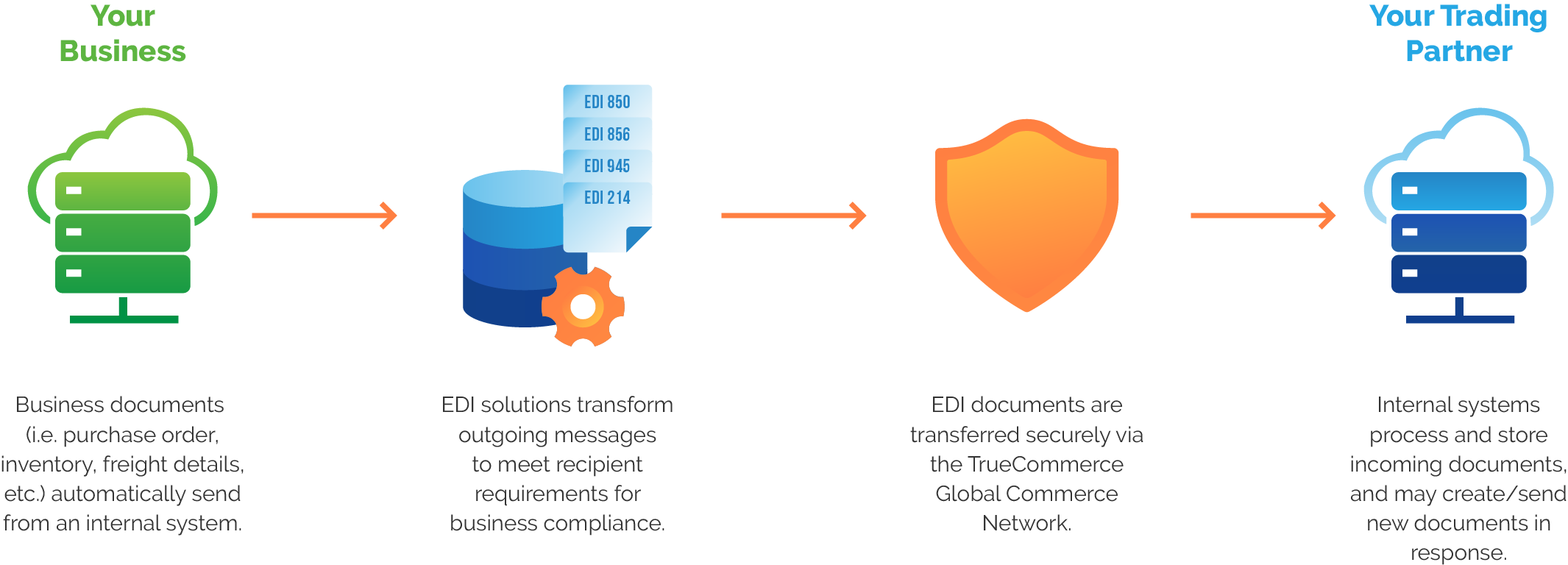What Is Electronic Data Interchange (EDI)?
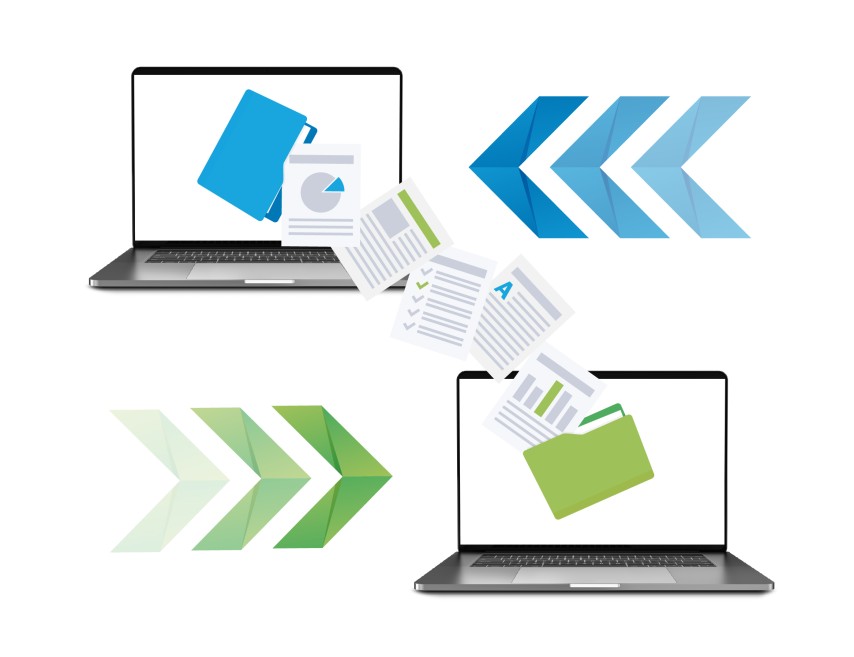
As a cornerstone of modern business communications, Electronic Data Interchange (EDI) offers a way to exchange business documents, replacing slow, manual business processes and eliminating transaction errors. EDI systems help businesses save time and money, increase productivity, improve partner relationships, and achieve countless other goals. With a well-integrated system, you can automate some of the most time-consuming parts of your operations for seamless data-sharing and unmatched scalability.
If you want to stay ahead of the competition and use modern technology to its fullest extent, you’ll need EDI on your side.
What Is EDI?
Electronic Data Interchange is a system or method for exchanging business documents with trading partners. These can be your suppliers, customers, carriers, third-party logistics (3PL) providers, or other supply chain connections.
In this method, automation replaces paper documents and manual business processes to streamline incoming and outgoing document types such as purchase orders, advance ship notices, and invoices. EDI software uses specific transaction codes to transmit data between computer systems in a standard format. In North America, EDI transaction codes use the American National Standards Institute (ANSI) X-12 standards. European businesses use another EDI protocol, called EDIFACT.

EDI Components
A complete EDI system consists of four components, which TrueCommerce provides as a single-vendor, unified commerce solution:
- A web-based EDI translator: The translator helps format EDI transactions according to the business needs of you and your partners. It can translate the information from one party to fit the requirements of another, even if you use drastically different formats.
- EDI mapping tables: These tables give the translator the EDI information needed to sync your business system conventions with your customers. When an EDI document comes through, your software knows exactly where to find certain details.
- A secure, dedicated transaction network: The transaction network allows you to send and receive EDI transactions to other businesses.
- Support and maintenance services: As standards and requirements change, an EDI support team ensures ongoing success with an updated system and proactive monitoring services.
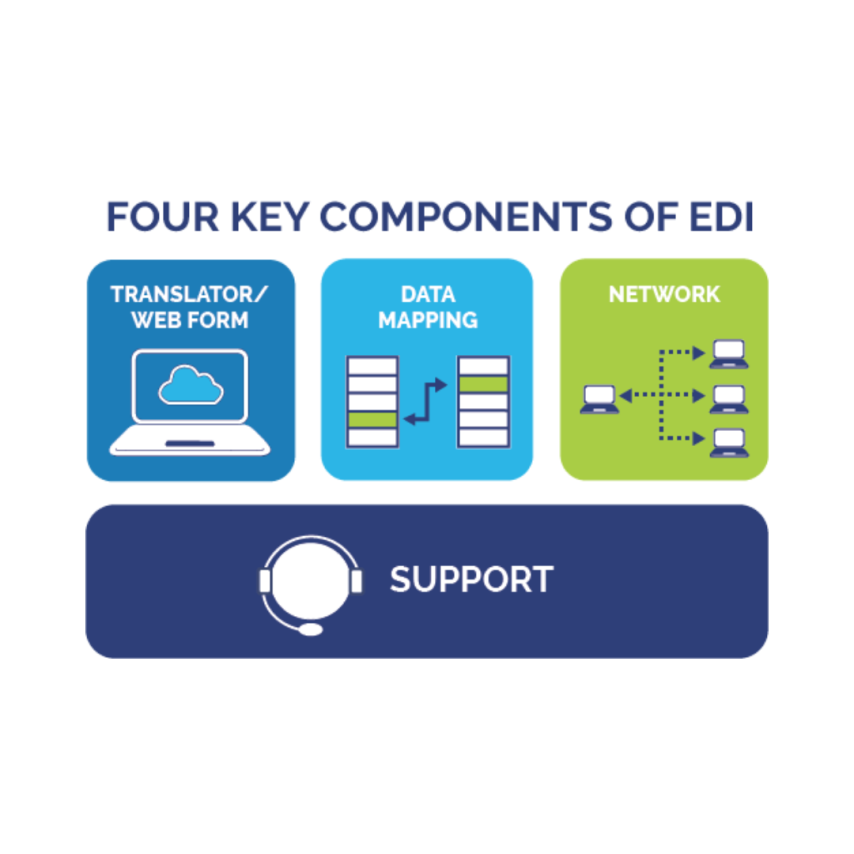
How Does Electronic Data Interchange Work?
EDI optimizes business processes by replacing manual data entry processes such as mail, fax, and email with electronic exchanges of business documents between two companies that may use vastly different internal business systems.
Most Electronic Data Interchange transactions start by creating an electronic document that’s based on information from your business system(s), spreadsheets, or related transactions. These documents use standardized EDI formats called transaction codes for easy ingestion and use by many businesses.
For incoming transactions, an EDI solution translates, or “maps,” the data sent by supply chain partners — such as suppliers, retailers, or carriers — into a format that your internal systems and/or users can comprehend and process. Unlike traditional EDI file transfer options, such as value-added networks (VANs), which need to be manually checked, if you have integrated EDI, the data is automatically sent to your ERP system — no retyping required.
From there, automation makes it easy to create responding documents and jumpstart order processing workflows from your warehouse to your accounts payable team to your logistics partners.
Electronic data systems also let brands meet compliance requirements for retailers and distributors to ensure every outgoing document has complete data in the correct format. By “mapping” data to meet these requirements, suppliers can easily meet buyer expectations and create seamless communications while saving time.
Different providers use different EDI networks and systems to deliver electronic documents. There are several types of EDI solutions as well, ranging from web EDI portals and direct EDI to fully integrated EDI. To learn more about your options, be sure to read our complete EDI Buyer’s Guide below.
What Does EDI Mean for Businesses?
While we often use EDI for automation and operations, its core function is as a communication tool to accommodate today’s rapid digital information sharing. EDI documents facilitate standardized communication between businesses, which is crucial for digitization and automation. These transactions also replace many manual touchpoints, allowing businesses to eliminate delays between receiving information and taking action. Let’s consider purchase orders and invoicing, two activities commonly associated with EDI.
Traditionally, placing an order would require the buyer to send a purchase order via fax or email. Then, the supplier would need to receive the data, process it accordingly, generate an invoice, and send the invoice back to the buyer. Each time a document is received, the supplier or buyer must identify and enter the relevant details into their internal systems. As you can imagine, repeating these tedious business processes for dozens of partners with varying formatting standards can lead to errors, miscommunications, and delays.
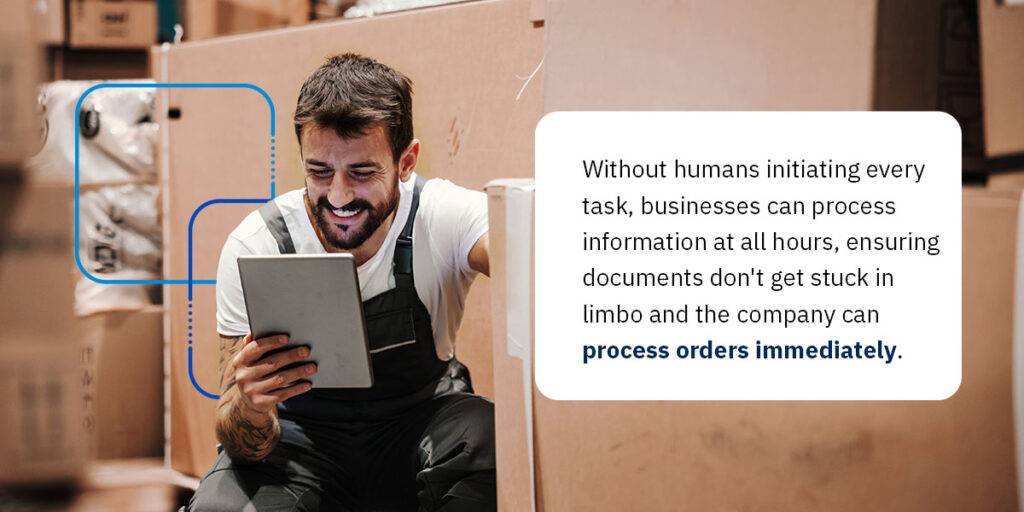
Electronic data systems eliminate many of these steps, allowing businesses to place orders and generate invoices faster and more easily, sometimes automatically. Without humans initiating every task, businesses can process information at all hours, ensuring documents don’t get stuck in limbo and the company can process orders immediately. Automation also helps reduce errors and improve reliability with standardized documents that put certain types of data in specific locations, regardless of the two entities’ internal systems and formatting practices.
Some common business activities that use EDI include:
- Purchase orders.
- Generating invoices.
- Ship notices and manifests.
- Purchase order acknowledgments.
- Warehouse shipping orders.
The Need for EDI
Traditional trade relationships rely on slow, manual processes. Often, they require your staff members to keep an eye on communications and manually key in business information on purchase orders and invoices type in order by hand. This strains your team and reduces your supply chain visibility and order processing speed. As a result, it can be difficult to expand your business.
The fact is, for businesses of any size, EDI implementation is essential for sustained competitiveness and growth. That’s why the industry’s been growing quickly each year — analysts expect the market to grow from $1.78 billion in 2022 to $4.52 billion by 2030. By exchanging documents digitally, you can:
- Enjoy substantial cost savings and improve operational performance across your business.
- Accelerate the flow of data elements to enhance accuracy and streamline order processing.
- Make it easier to manage inventory and reduce associated costs.
- Improve relationships with your suppliers, increase your vendor scorecard ratings from buyers, and enjoy even more benefits of EDI.
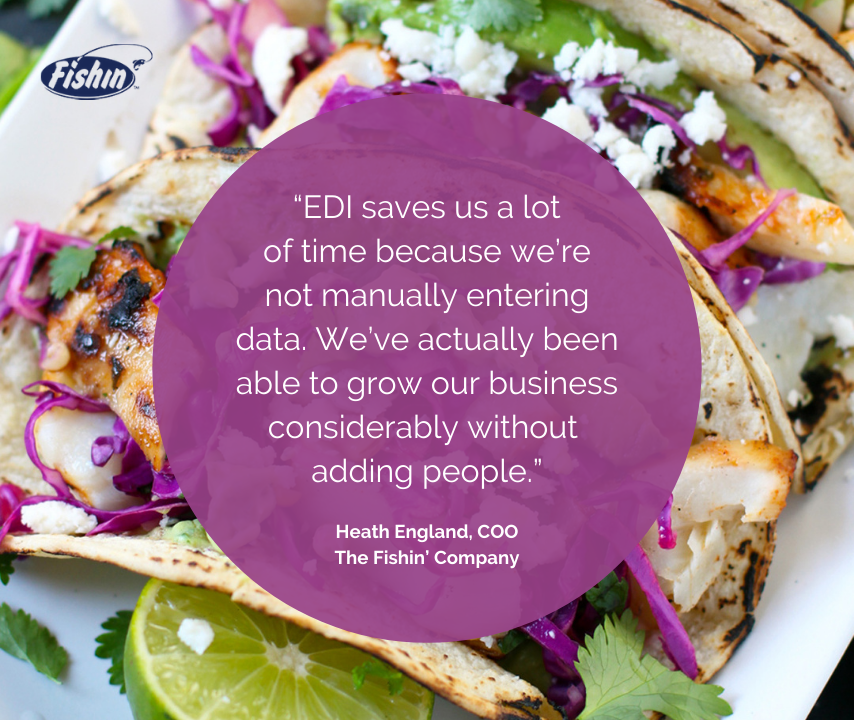
EDI Benefits
By automating data exchange between business systems, EDI provides the scalability and speed you need to grow your business. Here are a few benefits of Electronic Data Interchange:
- Fewer errors: Manual processes are prone to human error, and EDI can reduce or eliminate manual data entry inaccuracies by automating document exchanges. It also validates messages to bring errors to your attention before they hurt operations.
- Streamlined transaction processing: Reduce lead times and achieve rapid fulfillment with a smoother, more efficient approach. By eliminating touchpoints and opportunities for delay, EDI paves a path for streamlined, hands-off processing.
- Increased productivity without additional staff: EDI can dramatically reduce manual document processing, leaving your team to focus on more important tasks. You can scale your business and reach new heights without needing more staff to tackle extra paperwork — EDI has it handled.
- Easier, more cost-effective partnerships: Keeping up with all of your trading partners’ requirements can be daunting, but EDI makes it easy. These systems can help you ensure compliant transactions every time, so you and your partners can maintain positive relationships and minimize the costs of doing business with each other.
- Improved visibility: EDI transactions allow you to see what’s happening across your business without wondering what’s still being processed. You can quickly understand your inventory counts and demand and make more informed decisions.
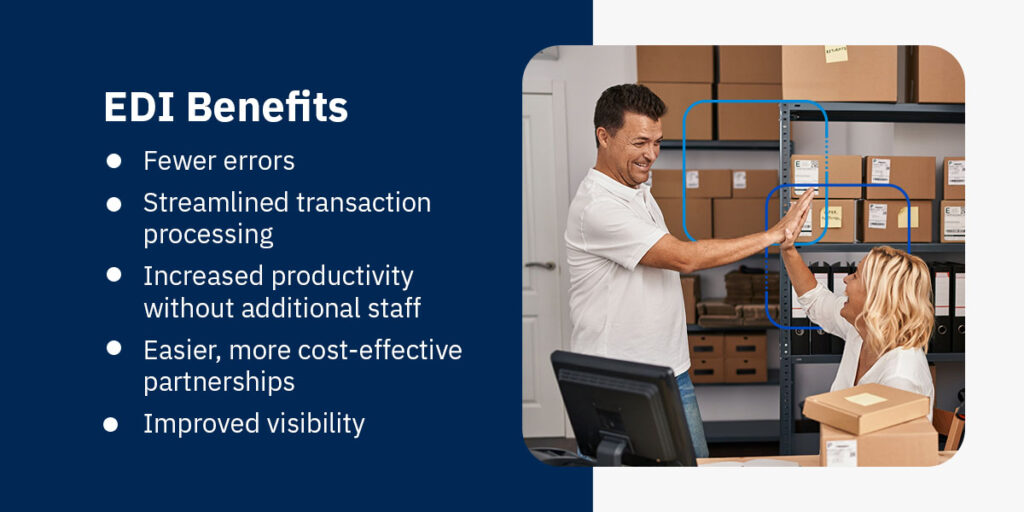
EDI Connections and Solutions
For most businesses, EDI is one part of a larger puzzle. Fortunately, with the right system, EDI connections can integrate with the many other systems and partners you already use — and those you could work with in the future.
Within your organization, you likely use a software solution, such as an Enterprise Resource Planning (ERP) system or accounting software. Some EDI programs, such as TrueCommerce, can integrate with these business systems to enable extensive automation capabilities and connect the data from business documents to your operational tools. As EDI documents arrive, TrueCommerce can input the data into your ERP or business system, including popular options such as Microsoft Dynamics, SAP, and QuickBooks.
These feature-rich connections can support tasks that range from validating EDI information to generating outbound documents. Using seamless integrations is the best way to create an automated, scalable EDI system and reap the biggest advantages of this technology.
Another significant piece of the puzzle is your partner connections. For many businesses, growth means working with more and more partners, such as retailers, online marketplaces, and third-party logistics (3PL) providers. Many partners have strict EDI requirements you must meet, as noncompliance can lead to penalties and damaged relationships. Keeping up with their varied EDI demands is time-consuming and error-prone, especially if done manually. An EDI solution can simplify the task with a large network of built-in trading partners.
TrueCommerce’s network map, for example, has over 1 million trading partners, including:
- Online marketplaces, such as Amazon, Wayfair, and Etsy.
- Retail stores, such as Target, Walmart, Best Buy, and Staples.
- Wholesale clubs, such as Costco and BJ’s Wholesale Club.
- eCommerce platforms, such as Shopify and WooCommerce.
- Grocery stores, such as Kroger, Hy-Vee, and Meijer.
- Convenience stores, such as CVS and Walgreens.
An EDI trading partner network eliminates the heavy lifting of adding new partners to your EDI system, such as configuring new mapping specifications. It also means you don’t need to continually monitor for any changes your partners make to their mapping specifications, as the network will update accordingly, eliminating the need to reconfigure your system each time.
EDI Software and Managed Services
Businesses can implement EDI as standalone software or through managed services. Cloud-based EDI software offers a centralized view of your documents and user-friendly tools for managing workflows from anywhere, as long as you have a Wi-Fi connection. If you already have a knowledgeable EDI team and the staff to handle day-to-day requirements, buying EDI software can be a cost-effective approach.
For many businesses, managed EDI services help maximize the benefits of EDI, thanks to the capabilities of an expert team. These capabilities include:
- Implementation services: An implementation team can streamline EDI adoption by configuring your software, testing integrations, training staff members, and confirming compliance with trading partners so that you can hit the ground running.
- Day-to-day management: EDI specialists tackle everyday tasks and solve problems while prioritizing your business needs, so you rarely need to get involved.
- Automatic mapping updates: If your partners change their EDI requirements, a managed services provider will make the necessary updates so you can confidently and easily stay compliant.
Managed services are ideal for businesses with minimal EDI experience or those looking to maximize their investment.

Making Electronic Data Interchange Easy
You don’t need to be a supply chain expert or tech wizard to get rapid time to value via EDI. TrueCommerce takes the pain out of implementation by delivering easy-to-use, robust, and affordable EDI solutions. We also offer the industry’s most responsive and knowledgeable support and maintenance teams through our managed EDI service provider model.
With TrueCommerce, you get:
- Integrations with 25+ leading ERP systems that make it easy to transmit EDI documents and automate processes across your business.
- A global network of 160,000 pre-connected trading partners that lets you quickly connect with retailers, suppliers, and more.
- SOC-compliant security, full redundancy, and a 99.9% uptime provide peace of mind.
- In-house experts and 24/7 customer service availability reduce your IT burdens.
